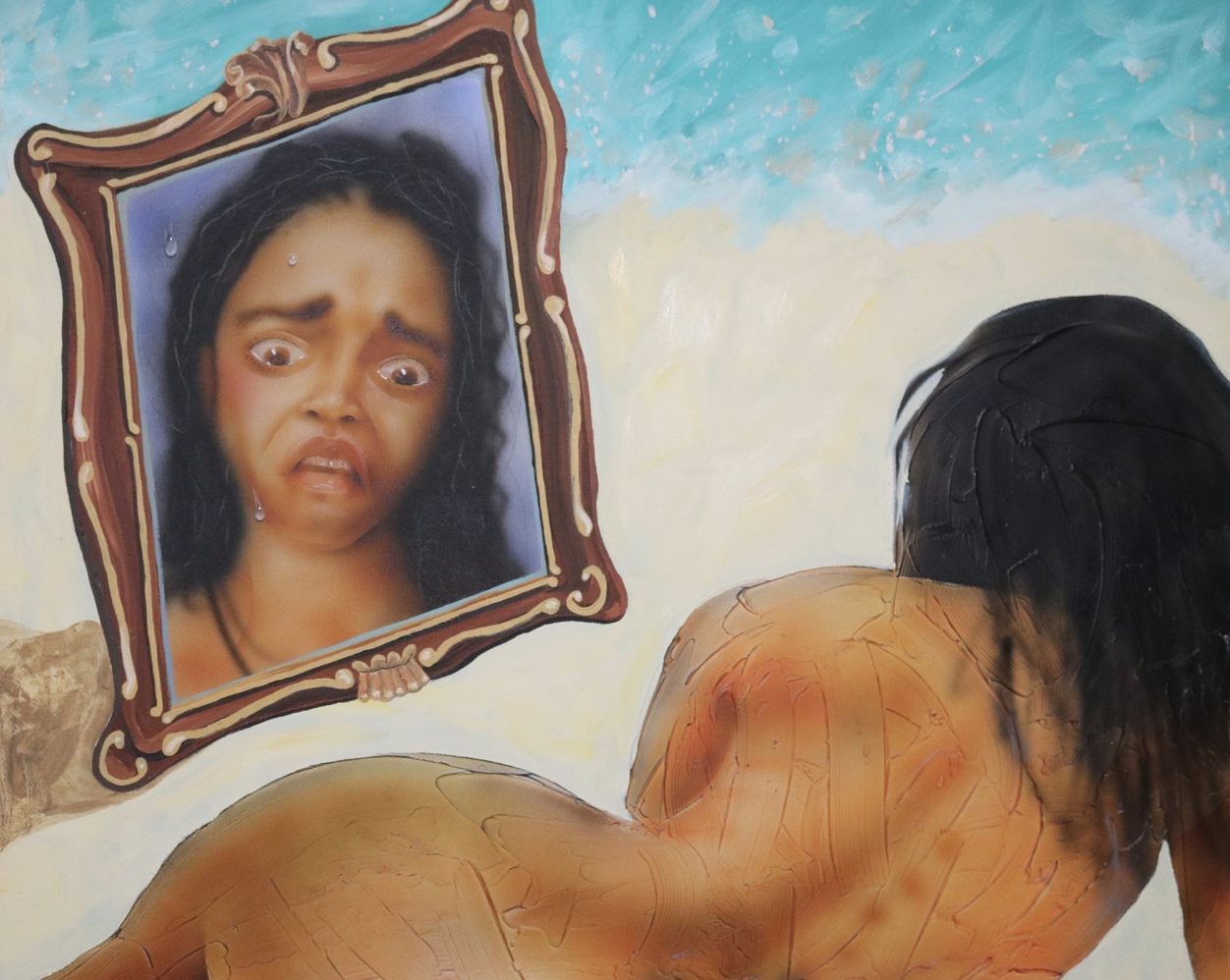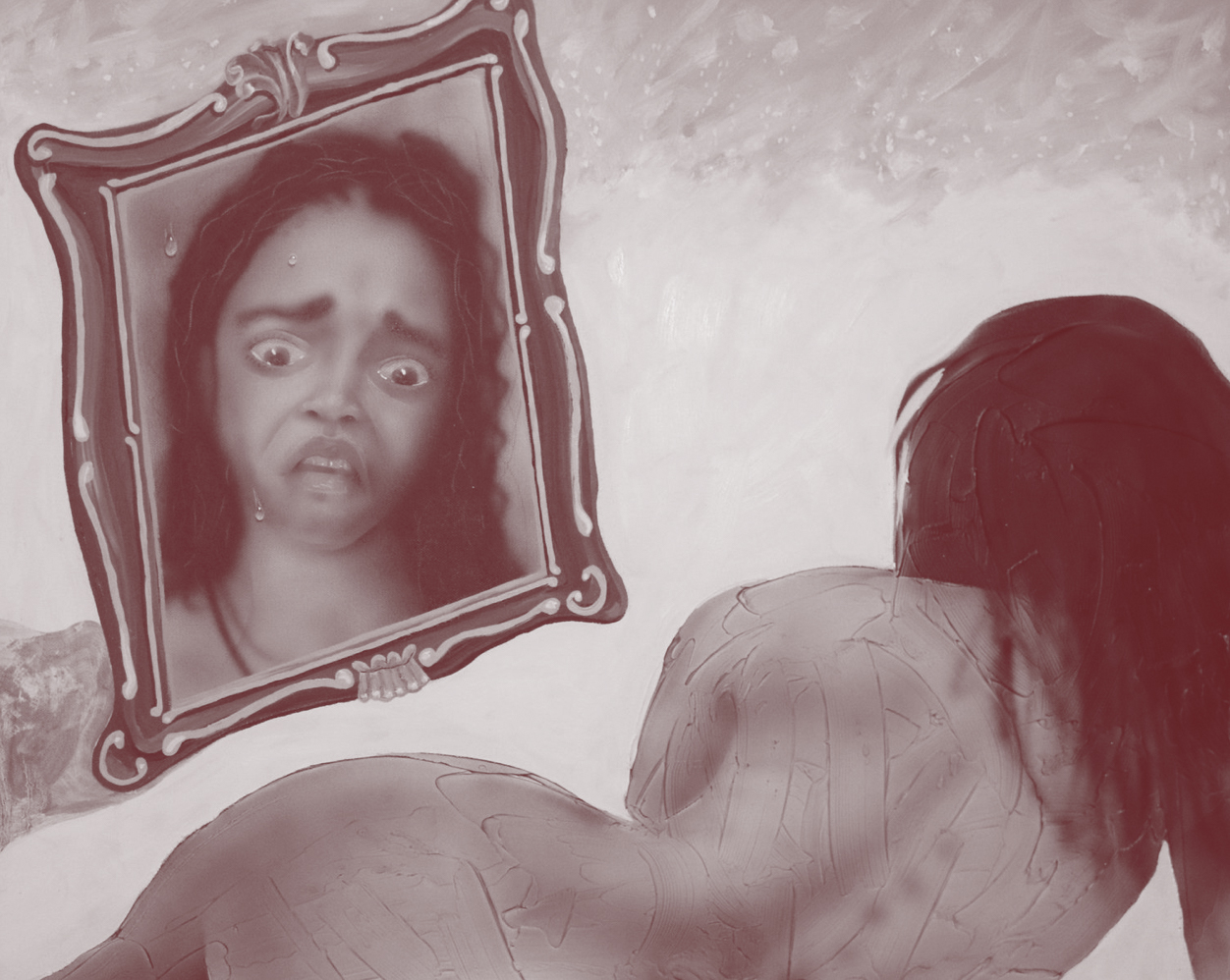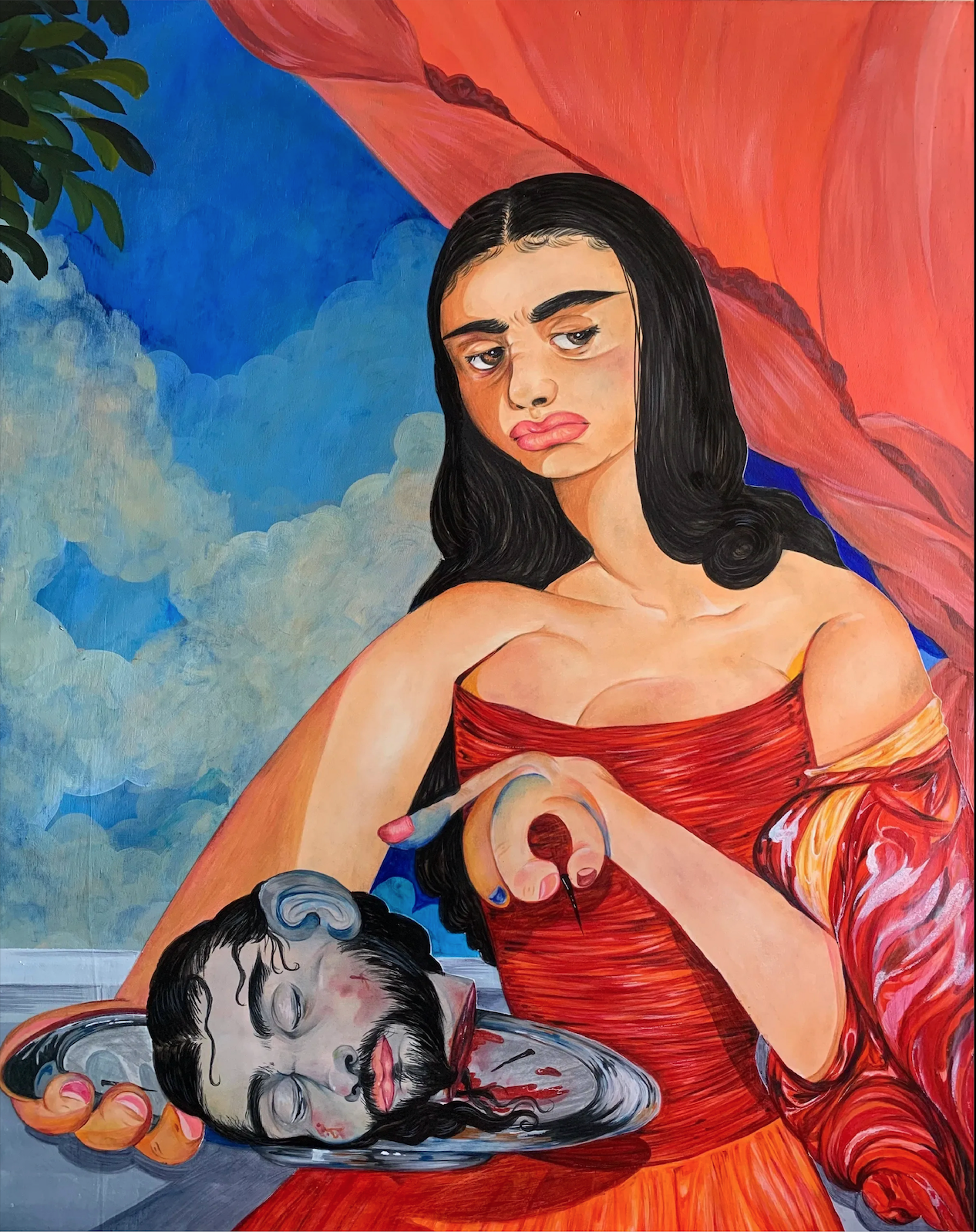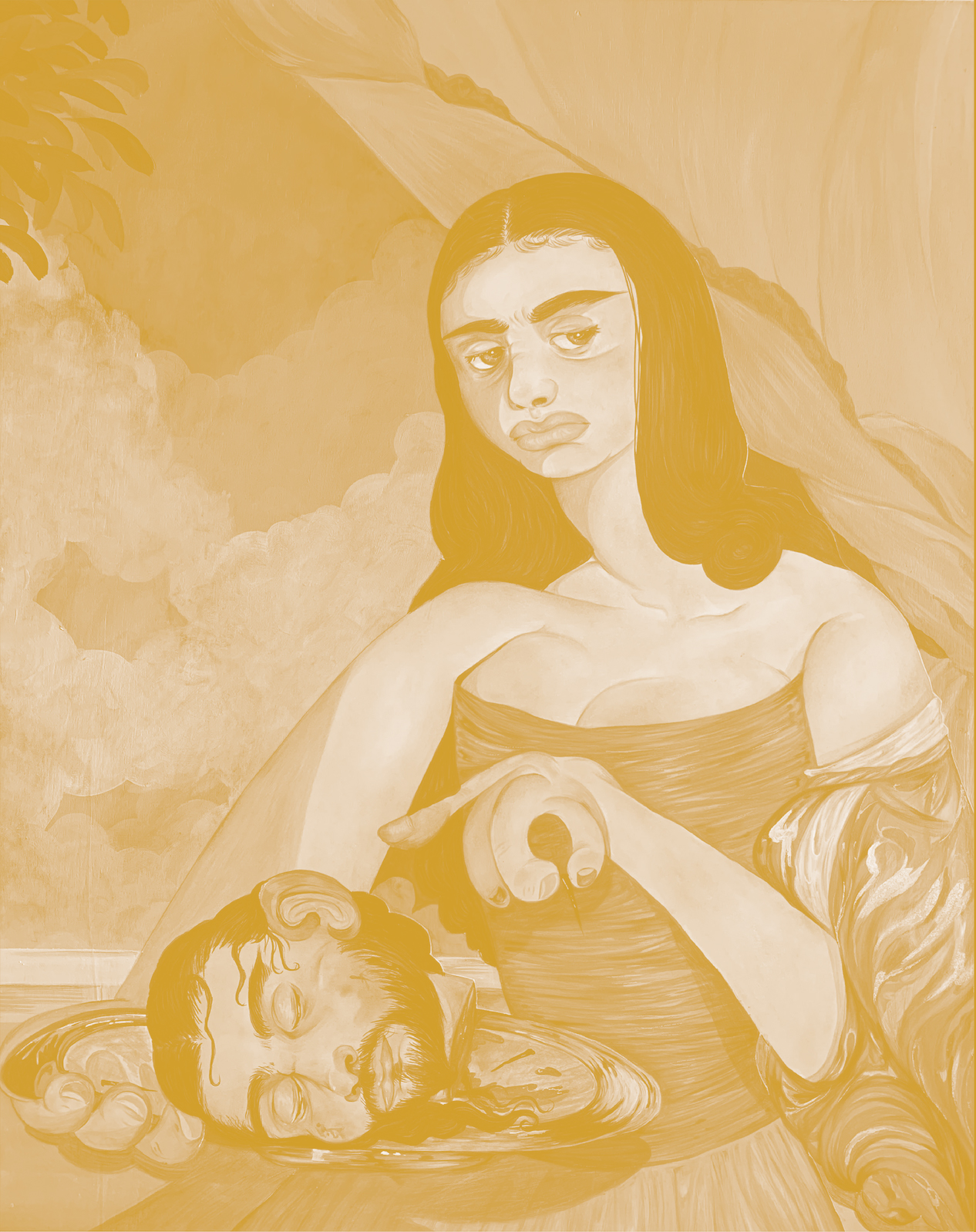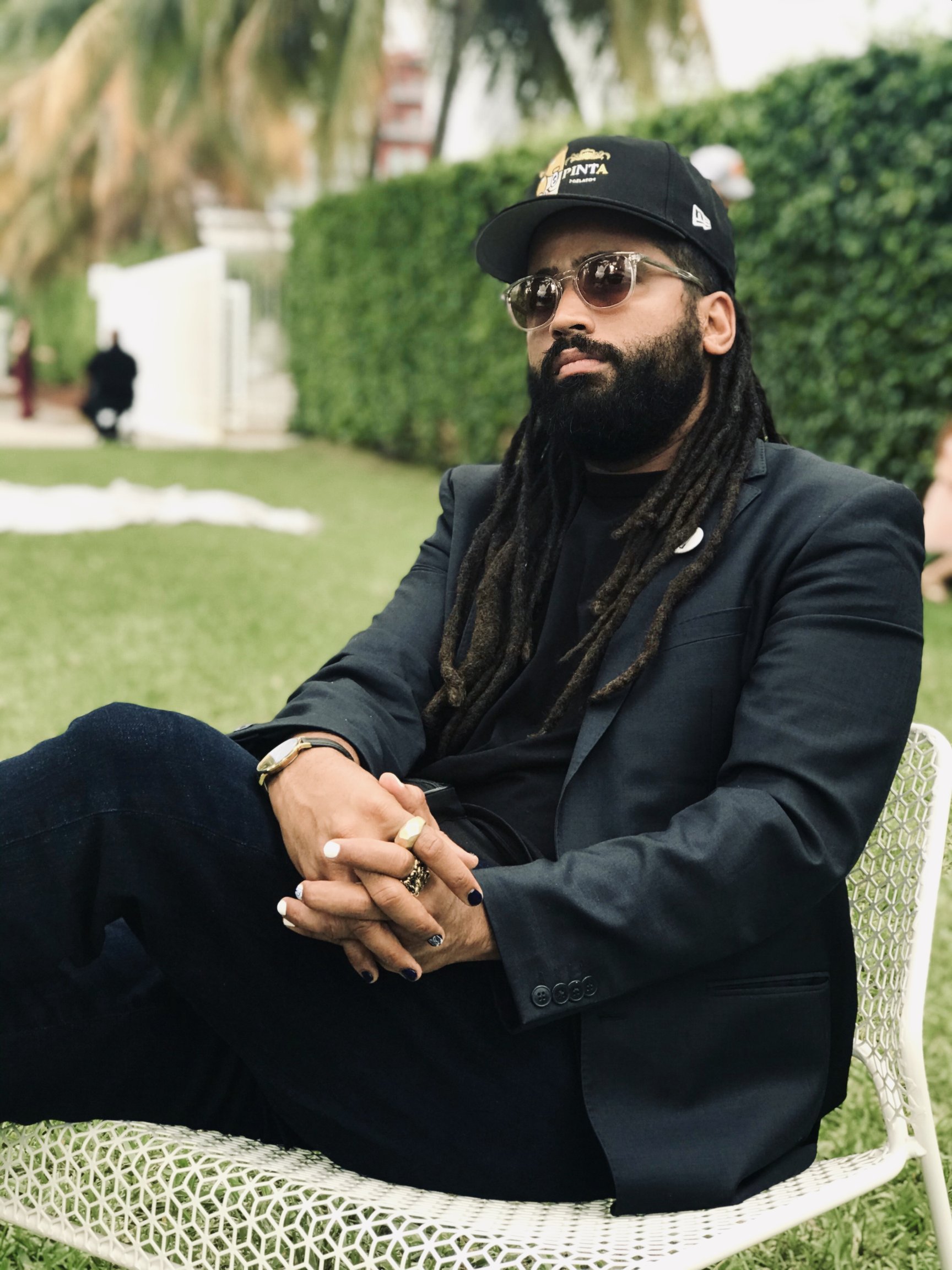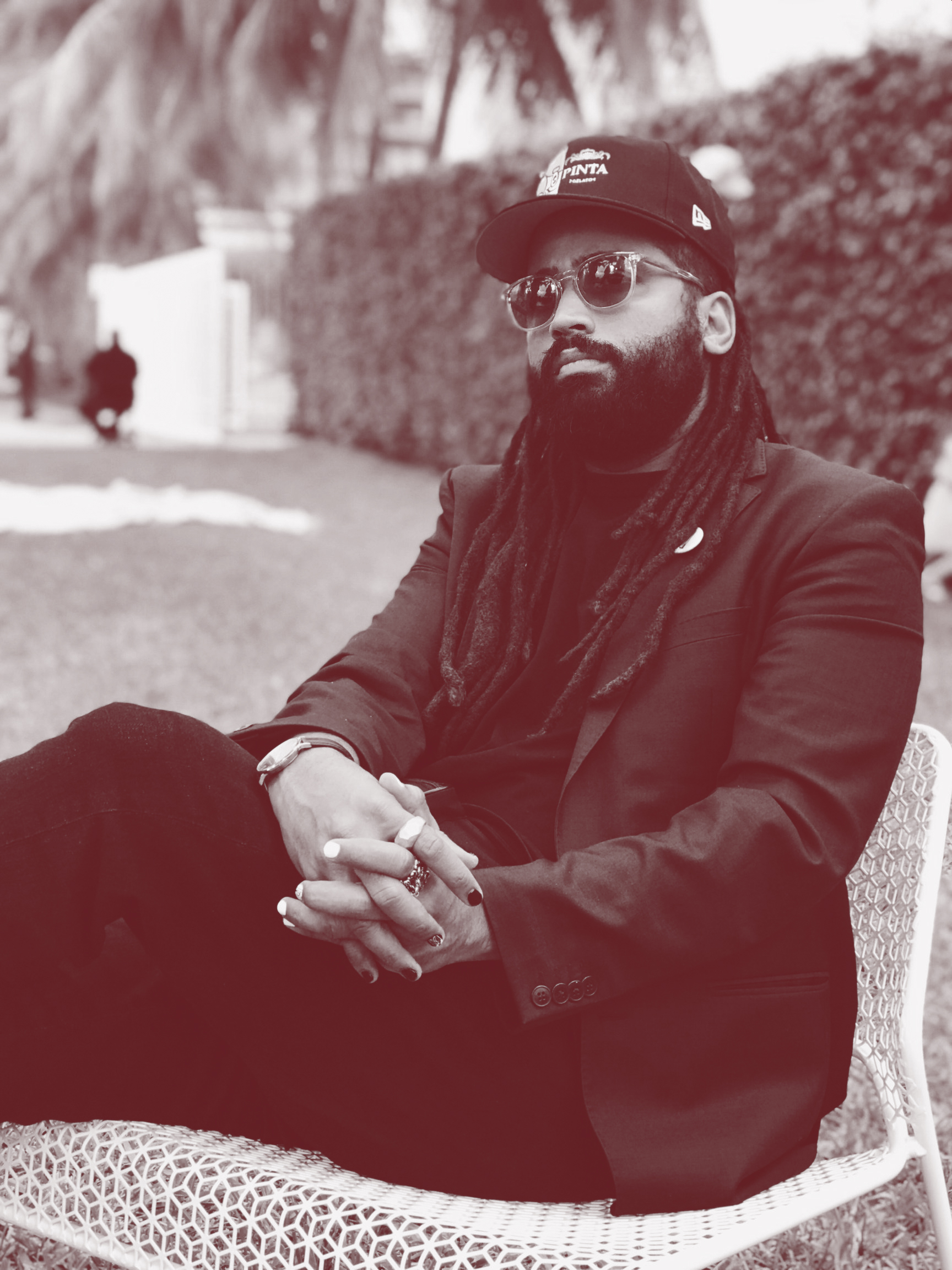
We delve into the world of Devin Osorio, a visionary magic realist artist. In this dialogue we discover Devin’s deep bond with their Dominican heritage, nurtured in the lively streets of Washington Heights. Presently, Devin finds themselves preparing their inaugural solo exhibition, titled “La Combi Incompleta,” set against the backdrop of Mexico City. Join us as we explore Devin’s artistic career, where imagination knows no bounds and creativity dances with reality.
I want to start by asking… How would you define Washington Heights Surrealism?
Washington Heights Surrealism describes works that intend to focus on the psychological while using Washington Heights as its anchor in one way or another either as a backdrop, its inspiration for social cues, or as an idea.
For some time, I believed that my practice fell under Surrealism but I’ve grown to learn that I align better with Magical Realism. The difference is that whilst I am exploring my psychology and emotional being, I always project those realizations with the people and physical spaces of Washington Heights. Creating my own fables with that knowledge. My mental self is the setting and Washington Heights is my developing character.
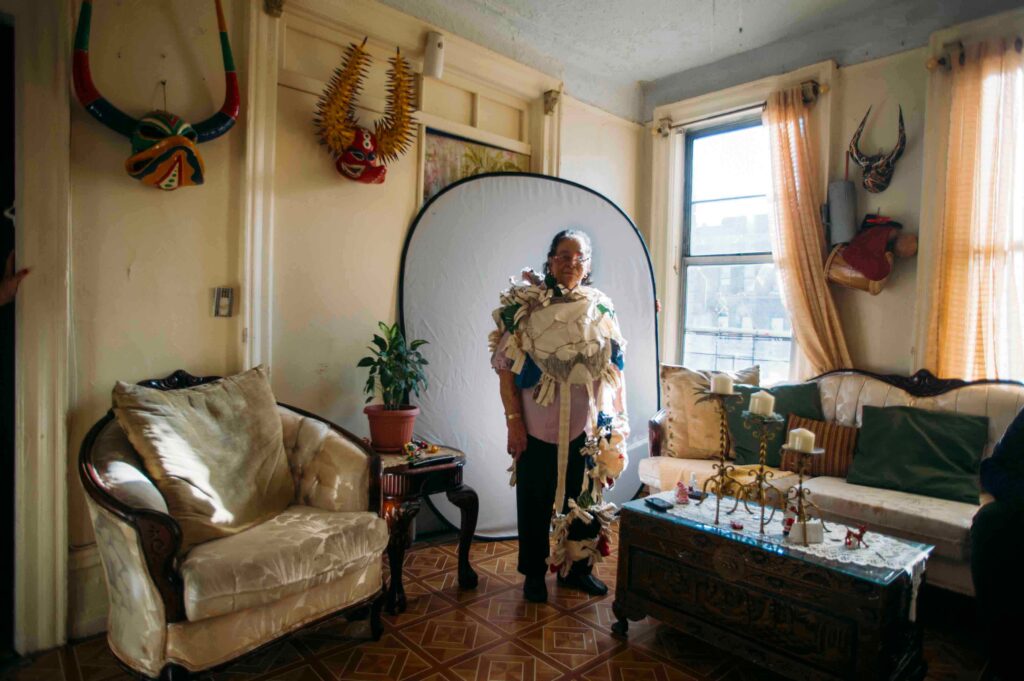

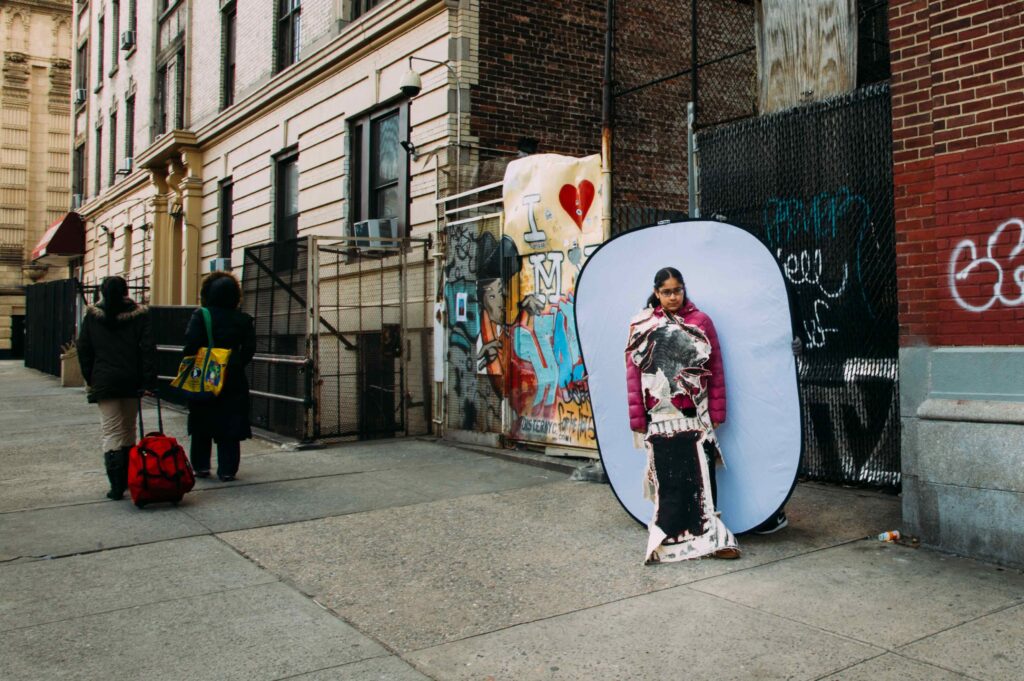
Why did you pursue a career in art, and how has that journey shaped your perspective on life?
Growing up I was not very impressive or stood out. I was neither the smart kid, the pretty kid, the artistic one, or the bully. I seemed to always fall on the border of social groupings. What I definitely was and still am is very curious. I did not want to be an artist but rather become a horse. Since that is not anatomically possible, I settled with spending all of my time playing with animals such as Matt and Chris in the show Zoboomafoo.
Art was always in my life in one way or another. My uncle, Ismael Checo, is a very talented painter who teaches his practice in universities. My brother, Kevin Osorio was the artistic person in the household and won national awards when we were kids. My father, Enrique Guarionex Osorio Peña, has been working as a landscaper in corporate buildings throughout NYC for most of my life and instinctively knows how to manipulate and tend to organic life to grow and flourish beautifully. My mother, Maria Lucia Checo de Osorio, was extremely smart and sociable. She knew how to make people feel comfortable around her and help them grow into whatever they desired. Although not all of these individuals worked in the arts or taught me my practice directly, they all contributed significantly to my artistic upbringing and how I navigate my practice. I don’t view my practice so much as creating art for art’s sake but I work as a researcher in which my outcome is in the arts. I use ethnographic research methods to navigate the work I produce, creating surveys and conducting interviews. I’m constantly reading research papers and studying concepts that seem to have nothing to do with my practice but are vital to my work. For example, I’m currently reading Bruce Bagemihl’s Biological Exuberance, The Sexual Healing Journey by Wendy Maltz and Micromotives and Macrobehavior by Thomas C. Schelling, which are all teaching me about humanity both independently and shared.
The creative pursuit is not one of outcome but one of process. It’s allowing oneself to invest in their curiosity and allowing it to bear an abundance of fruit. It took me a very long time to realize that I deserved to live a life beyond survival but one of enjoyment and fulfillment.
I began working for money at the age of 12 helping with light construction in the basement of a church. Since then I grew to believe that my life was aimed to pay bills and rest when I’m not in that pursuit. It left little space for personal investigation. Yes, one could make money from many sources, but I did not equate joy and money-making in the same context. Allowing myself to pave a life path that allowed for both worlds to live together taught me to trust myself, believe in myself, and gift myself more than I could even imagine.
I understand that growing up in Washington Heights has inspired your work conceptually. However, what inspirations have you drawn in terms of aesthetics?
Aesthetically it’s in the details of my work. I grew up in 565 W 175th Street whose doorway has this beautiful ornamental decoration of a garland made up of abstracted grapes, bananas, apricots, and apples. The tiled floors were made of beautiful marble that was cut into geometric shapes that snaked their way through the entire building. Within my apartment, the window frames came off the wall, making it seem like the outside world was being held within an antique frame. Near the windows in the living room, my parents tended to a small jungle of plants that towered over the couches, and windows, and slumped over the ceiling. My mother loved to rearrange the apartment constantly and painted walls in whatever color piqued her interest at the moment. At one point she painted our living room a gorgeous pumpkin orange and our kitchen a dark forest green. Throughout my entire childhood, we have had a miniature painting in the kitchen of a cut melon and two cherries fading away into chiaroscuro. This painting sat next to ceramic wall figurines such as colorful fish or dainty Renaissance angels.
Outside on my block, people sat on the cement steps of the Incarnation School whilst others created circles around the steps with foldable picnic chairs, stacking numerous amounts of jackets and leather purses on the backs of their chairs which threatened to topple over from the excessive unbalanced weight. Their cupholders were filled with beer bottles, baby pacifiers, and candy. The sidewalk was filled with blunt wrap residue and empty Hennessy bottles. My block was always difficult in regards to finding available parking spaces, cars were often left double parked on the street. Rows of cars stacked neatly next to each other with a few leaving their trunk open to blast music for the block to enjoy. Growing up the reason to own a car was not only for transportation but to be able to tailgate on the block and use the back seats as day beds for sun-drunk children.
These are the details that make up the aesthetic of my work.
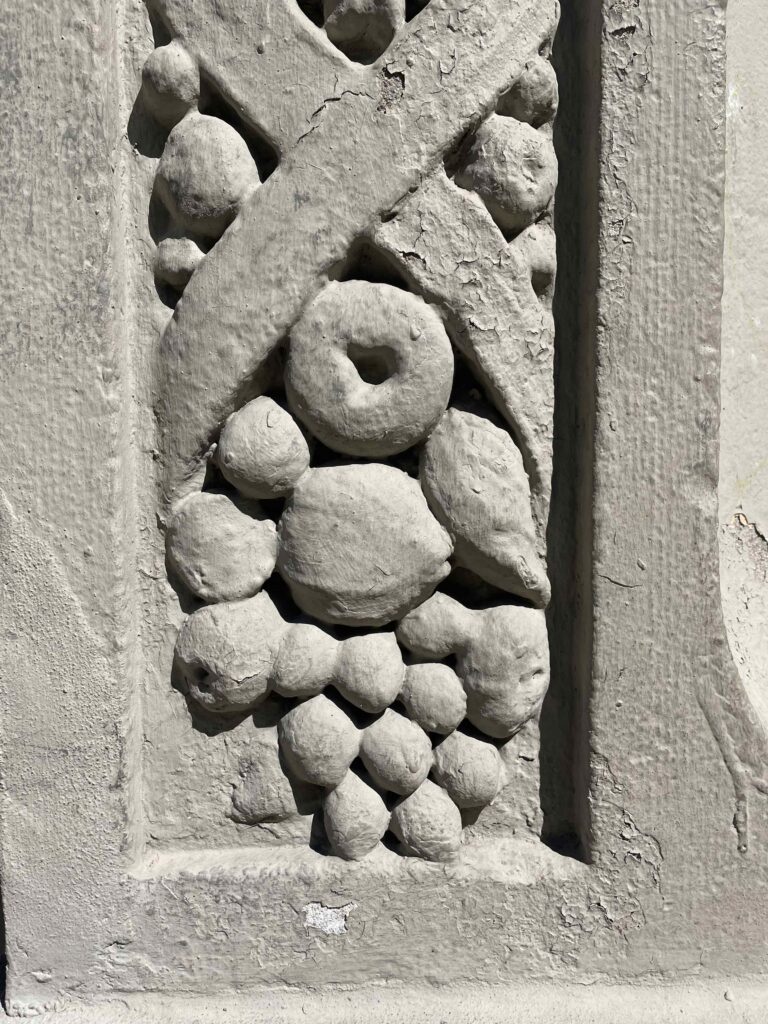
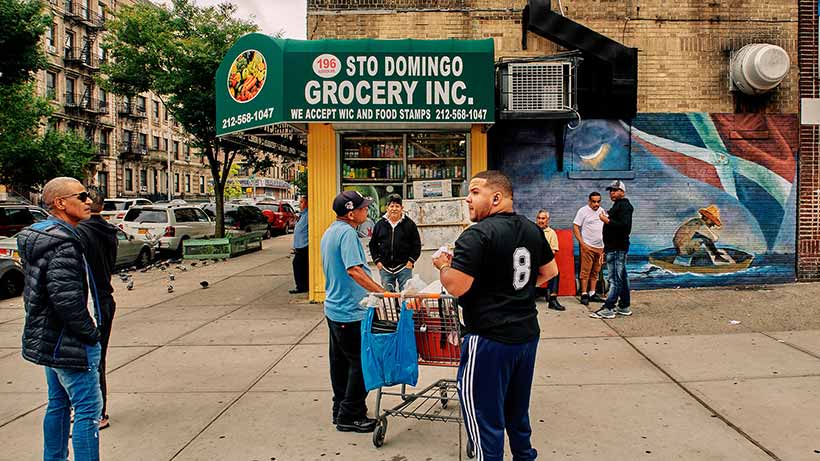
“Art can also function as a personal textbook, a space to record and find the connections between all of the learning one does.”
How do you view the relationship between art and the human experience? How does your art reflect or comment on the world we live in?
I believe that art is the outcome of brain expansion and/or exploration. It can function as a journal and allow for one’s thoughts and emotions to be studied and materialized. Allowing them to potentially find clarity and to some degree, third-person evaluation. Art can also function as a personal textbook, a space to record and find the connections between all of the learning one does. In essence, art is a tool that provides the possibility to extract that which we hold in our interior and project it onto something material – an ability that is truly powerful and beautiful.
When I was in college, I became very close with a brilliant artist named Zlatko Mitev. He is from Sofia, Bulgaria and one would think at first glance that we would have nothing in common but in reality, we were kindred spirits. We loved the same things and seemed to inspire each other often with either new findings or by sharing ideas. Something that connected us deeply was music and our love for it, we would have drunken jam sessions in which I recited old reggaetón songs followed by copious moaning melodies and he would recite drum skits from his time in a screamo band. We would also often send each other links to songs. In sharing we found a deep connection to music from both Bulgaria and the Dominican Republic. Beyond sounding similarly, they seemed to function in similar ways culturally – at times to discuss pain through tools of joy and as an escape from reality by stepping into spaces of ecstasy. My practice attempts to continue that exercise of finding parallels within existence and collage them together conceptually. I don’t do this in order to reveal global connectivity per se but as a way to expand ones understanding of their own existence.
Growing up I was not allowed to leave Washington Heights often. Areas such as downtown Manhattan became fictional spaces that adults and children in movies had access to. In finding these parallels I am allowing my child self to realize just how abundant my community is and how much larger everything around me actually was.
When you look back at your body of work, which piece or series holds the most significance to you, and what story does it tell about your artistic evolution?
A few pieces definitely come to mind, but the piece that stands out most is, Aprender Del Caer (2021), an artwork I created days before I moved to Mexico City from Brooklyn. At that time, I had created my first handful of pieces on canvas thanks to being motivated by the extremely talented, Tiffany Alfonseca. It was scary to justify spending money on my practice at that time because I was not sure if I was worth investing in. I knew that I had talent and that I enjoyed painting but it was a tool of catharsis, not a career. I began by making somewhat safe paintings that touched on topics about Dominicanness but reserved my vulnerability. The very last piece I created before my move was inspired by a conversation I had with a South African shaman over WhatsApp. In this conversation, he mentioned that people that live in cities struggle in life because they do not have enough trees around to fall from. He said that those individuals don’t learn the valuable lesson that the fear of falling is not about the landing but in the act of falling itself. Once one learns that the landing isn’t as monumental as assumed, one becomes more confident in their leap. This thought felt poignant at the moment as I sat in a bedroom that was being packed into boxes to initiate my move to a new country.
What makes this piece so significant for me is that this was the first piece in which I allowed myself to be vulnerable to the public. I was materializing my fears and excitement for this new life transition. When that piece sold, I was shown that I am worth investing in and more importantly, that my vulnerabilities are tools of empathy rather than insecurity. When one closes the window, the ceiling has a way of cracking wide open.
“What makes this piece so significant for me is that this was the first piece in which I allowed myself to be vulnerable to the public.”
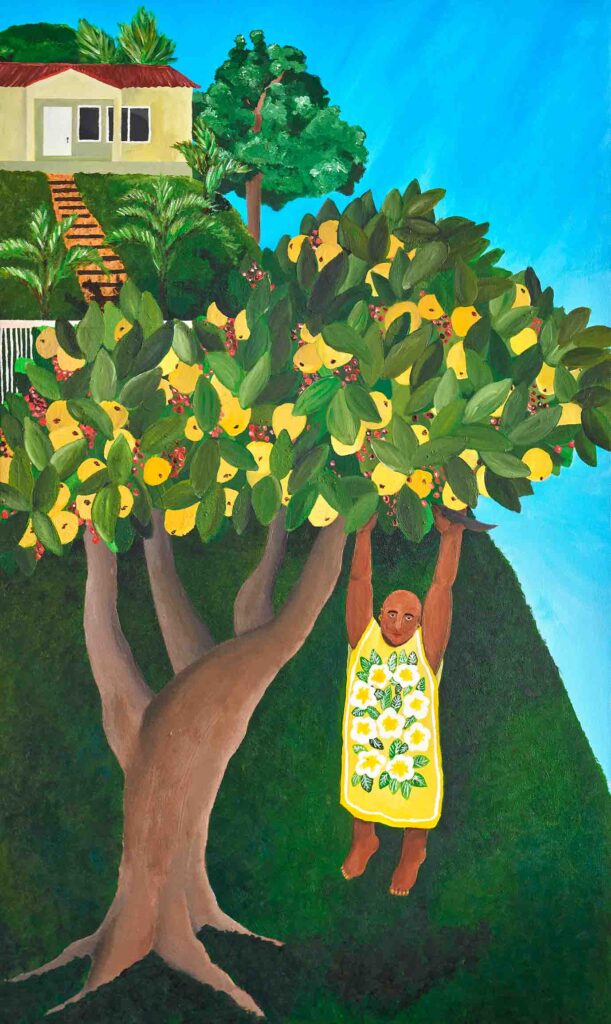
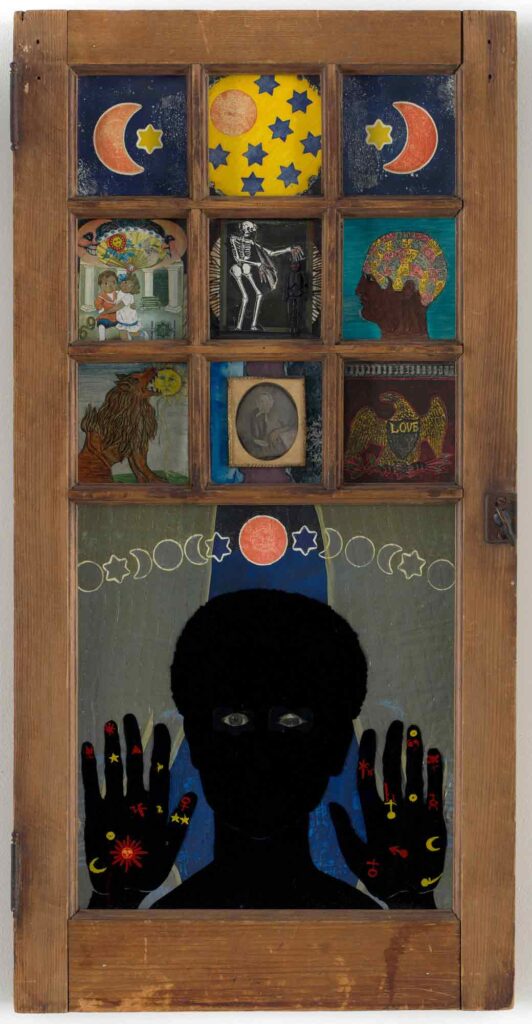

You have many artists that inspire you like Gabriel Garcia Marquez, Faith Ringgold, Richard Avedon and others. If you had to choose the most impactful artist to your work, who would that be and why?
When I first moved to Mexico City and really began to sink my teeth into a painting career, I realized that I needed to strengthen and deepen my art history knowledge. This would work in my favor during studio visits and party conversations but also grant me a deeper understanding of my own tastes. I decided that every morning I would spend at least an hour doing research on artists. I have notebooks filled with notes about the lives of artists both contemporary and from the very distant past. During this research is when I came across Betye Saar’s work properly. I had learned about her in one of my art history classes in which we studied The Liberation of Aunt Jemima (1972), but we did not dig into Saar’s life story and the beautiful breath of her work. When I saw Black Girl’s Window (1969), for the first time I felt as though time had stopped. Saar had created an artwork that spoke about me in better ways than I could. She could effortlessly connect all the parts of me into one piece and I was left dumbfounded with goosebumps. Ever since I’ve been attempting to create work that moves me to such a degree.
What advice would you give to aspiring artists who are just starting their creative journey?
This sounds so auntie of me but I would recommend reading a lot and reading all of the time about anything and everything that they are interested in!
When I graduated from college my great friend, My Dinh, and I collaborated together on a fashion collection for the second time. She would create the silhouettes and I the textiles. We called our line Ratchet Couture because we loved mundane objects and kitschy memorabilia but wanted to elevate them with couture techniques and sensibilities. My taught me to do research properly. For about three months we would meet up after work at the FIT Library and devour countless amounts of books in order to better understand what we were inspired by. One week was spent doing research about the emotion and the vibe that we wanted to emit with the collection. The following week was spent on the textures and colors that we wanted to focus on. All aspects of the work were not conjured aimlessly but were slowly revealed to us through the collection of our organic interests. I appreciate this lesson because I’ve used this process ever since. Whenever I am stuck I sit and read. Whenever I am confused I stop and read. I allow the answers to reveal themselves rather than me conjuring them.
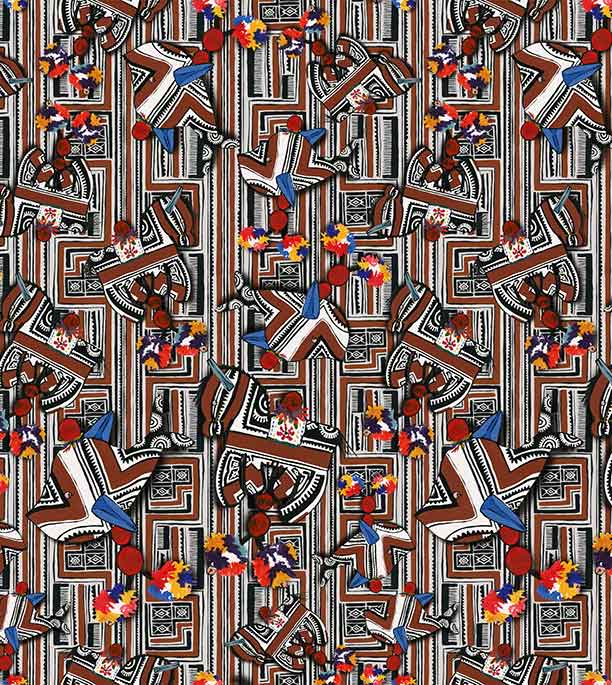
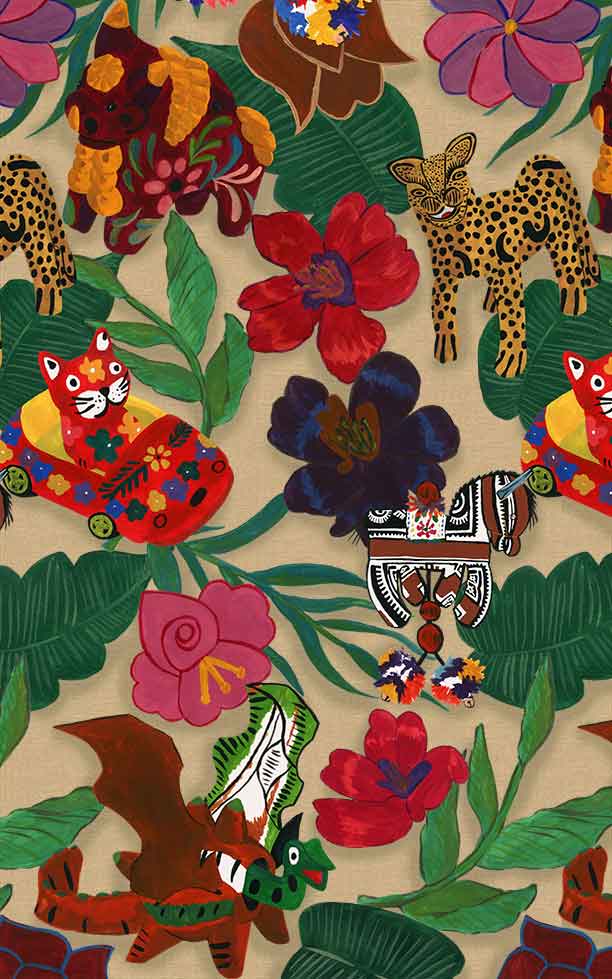
Do you have any current and upcoming exhibitions you would like to share?
I do, I am excited to announce that I will be having my first solo exhibition in Mexico City with Adhesivo Contemporary titled, La Combi Incompleta. Following that I will be having another solo exhibition with Charlie James Gallery in Los Angeles in February 2024. Any other projects are usually listed on my Instagram description, any group showcases that I’ll be participating in will be listed there.

